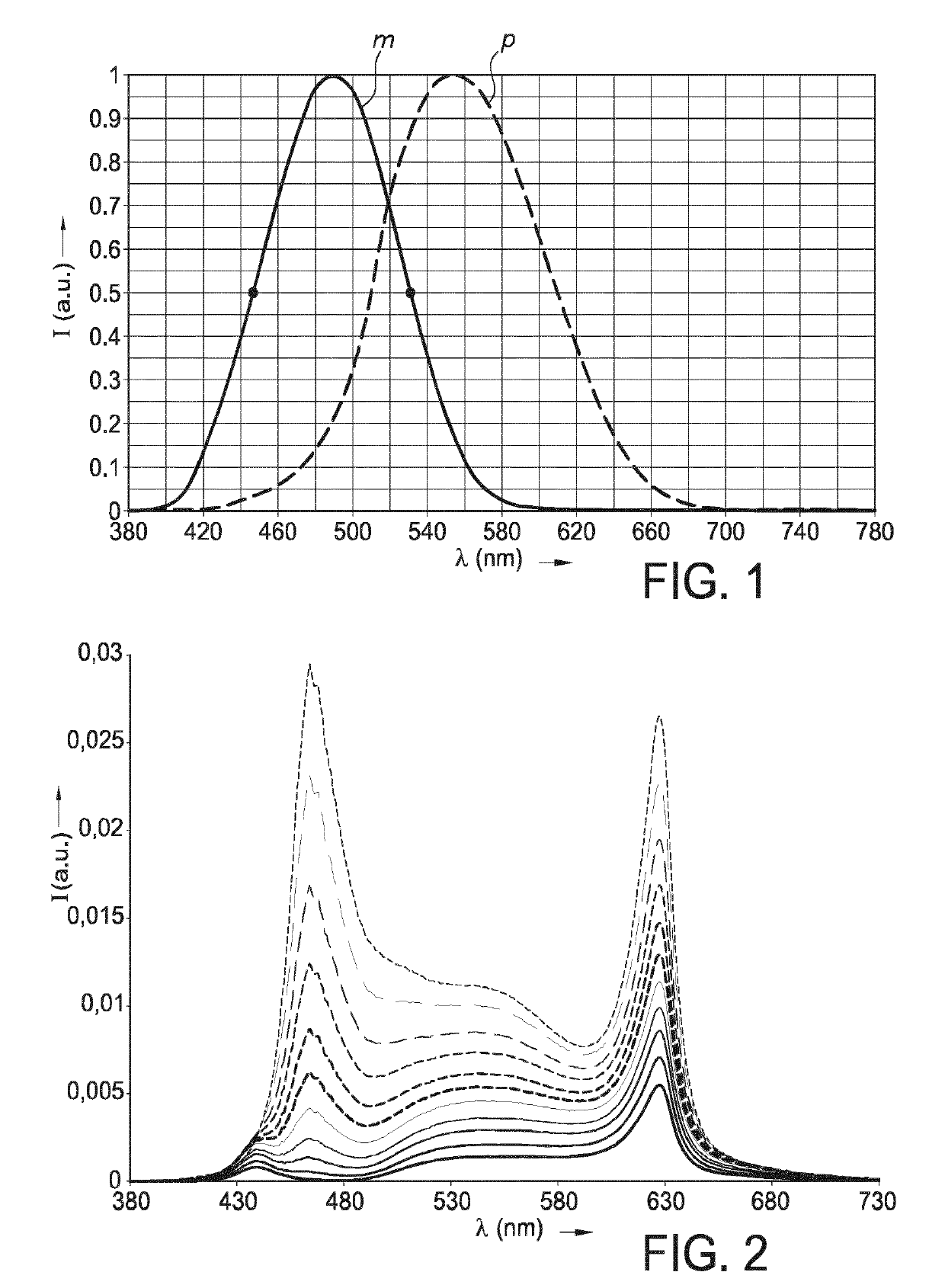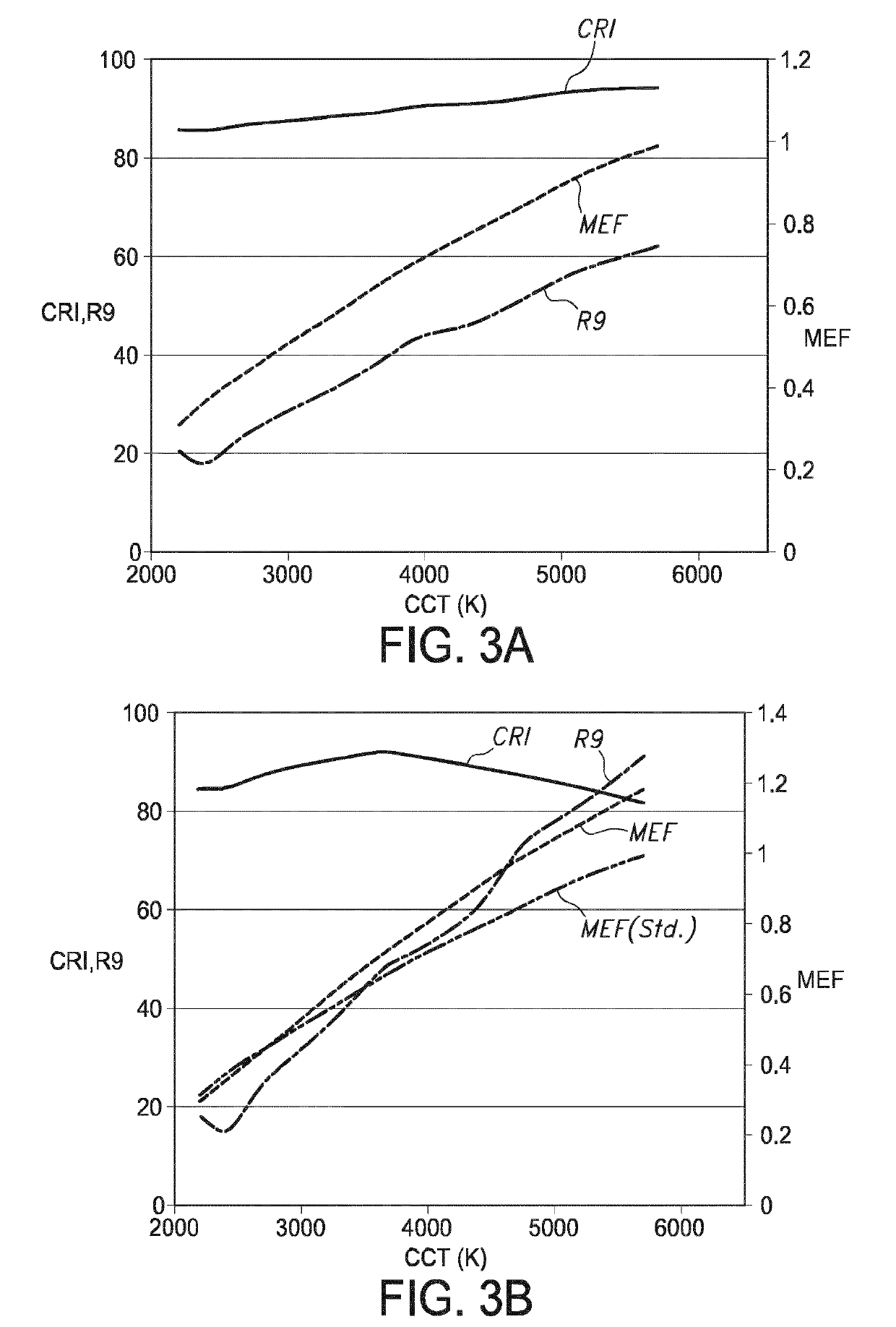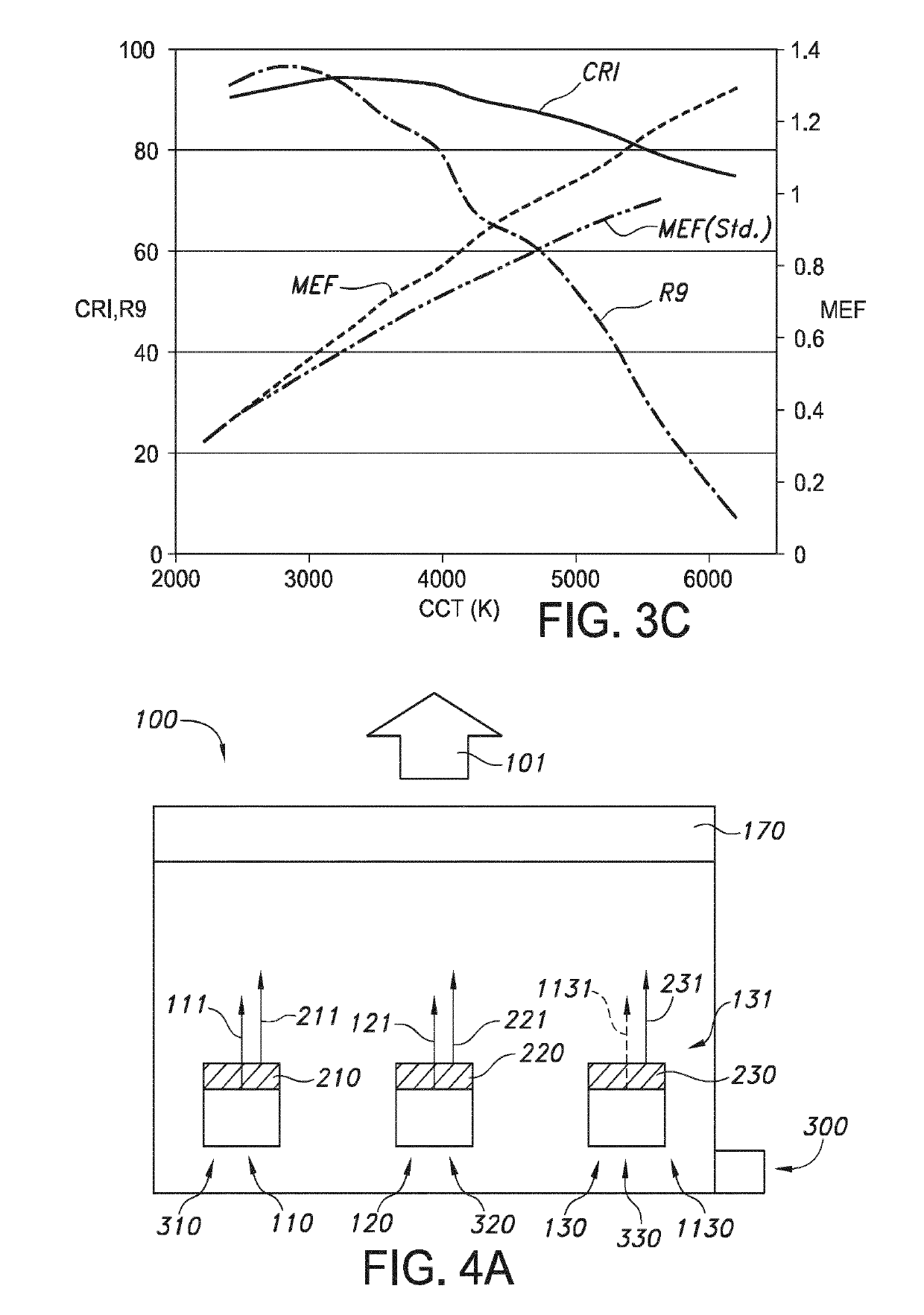Bio hue lamp
a technology of hue lamp and bio-infra-red, which is applied in the field of lighting apparatus, can solve the problems of not optimizing the spectral power distribution of light with regard to supporting the human circadian rhythm, color quality may become unacceptable, and may need complicated solutions for lighting apparatus prior art, etc., to achieve suppressor or support melatonin production, promote sleep, and high correlation color temperature
- Summary
- Abstract
- Description
- Claims
- Application Information
AI Technical Summary
Benefits of technology
Problems solved by technology
Method used
Image
Examples
Embodiment Construction
[0059]FIG. 1 shows the relative melanopic (m) and photopic (p) human eye sensitivity functions. The maximum sensitivity for the melanopic function is at 490 nm, the full width half maximum values are at 447 nm and 531 nm.
[0060]FIG. 2 shows an example of the tuning of the emission spectrum and thereby the correlated color temperature with an embodiment of the lighting apparatus. Here, an embodiment was used with a blue LED with dominant wavelength at 440 nm, with YAG:Ce3+, a blue LED with dominant wavelength at 462 m, with LuAG:Ce, and with a red LED with a dominant wavelength at 613 nm. The lowest curve (solid curve), has a relative high red contribution, and a relative low blue contribution, with the blue contribution at lower wavelengths, which is the relative warm white light. The highest curve has a relative high blue contribution, which blue contribution has shifted to a wavelength closer to the melanopic maximum (relative to the lower curves). Hence, this is relative cool whit...
PUM
 Login to View More
Login to View More Abstract
Description
Claims
Application Information
 Login to View More
Login to View More - R&D
- Intellectual Property
- Life Sciences
- Materials
- Tech Scout
- Unparalleled Data Quality
- Higher Quality Content
- 60% Fewer Hallucinations
Browse by: Latest US Patents, China's latest patents, Technical Efficacy Thesaurus, Application Domain, Technology Topic, Popular Technical Reports.
© 2025 PatSnap. All rights reserved.Legal|Privacy policy|Modern Slavery Act Transparency Statement|Sitemap|About US| Contact US: help@patsnap.com



